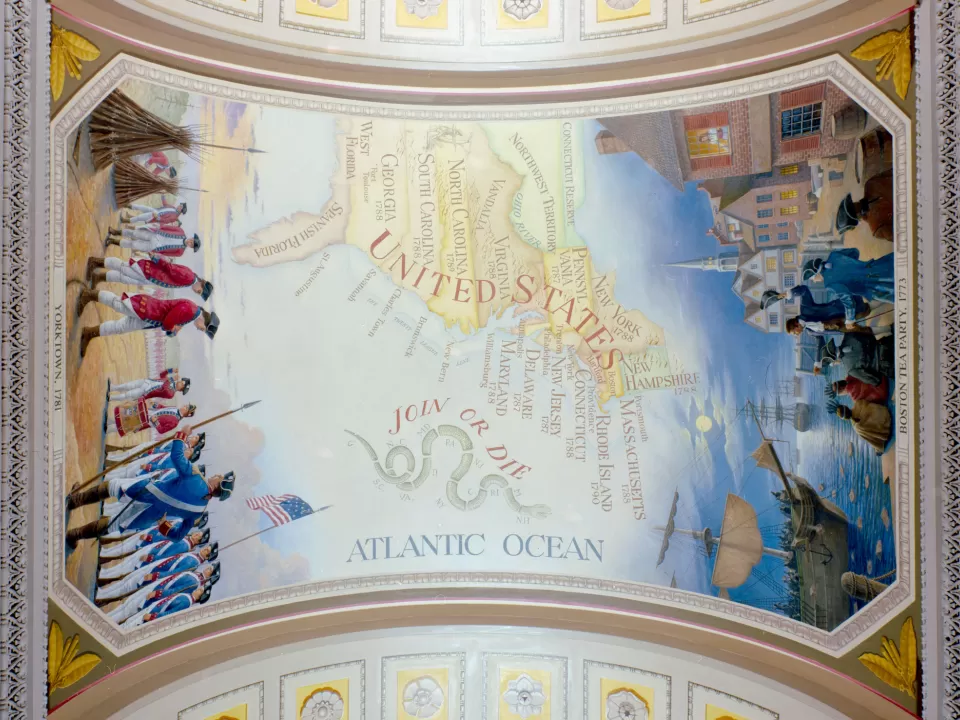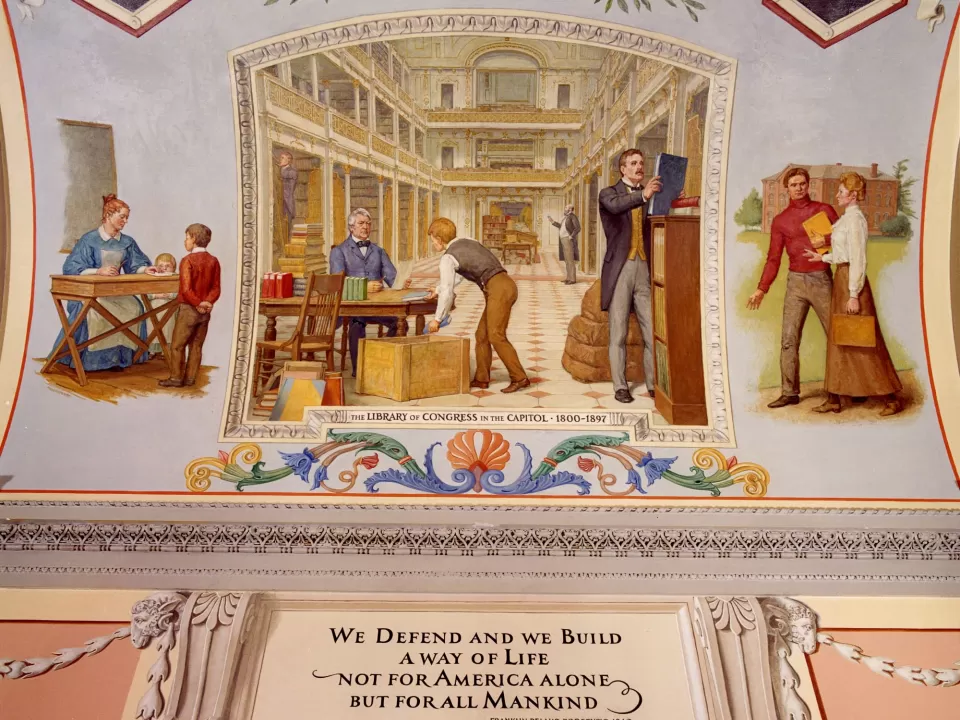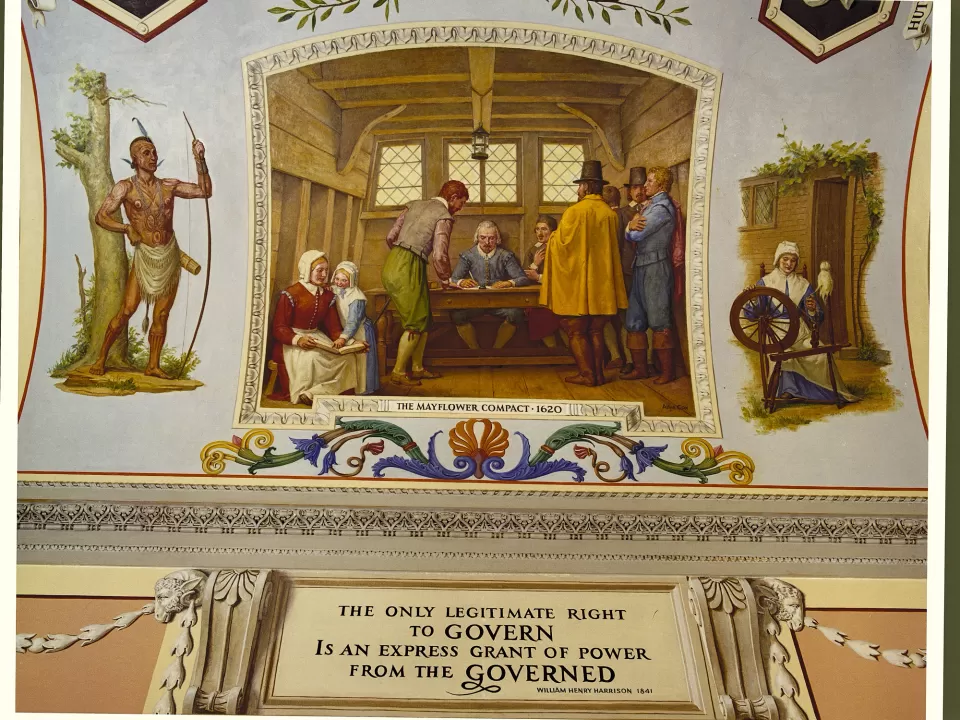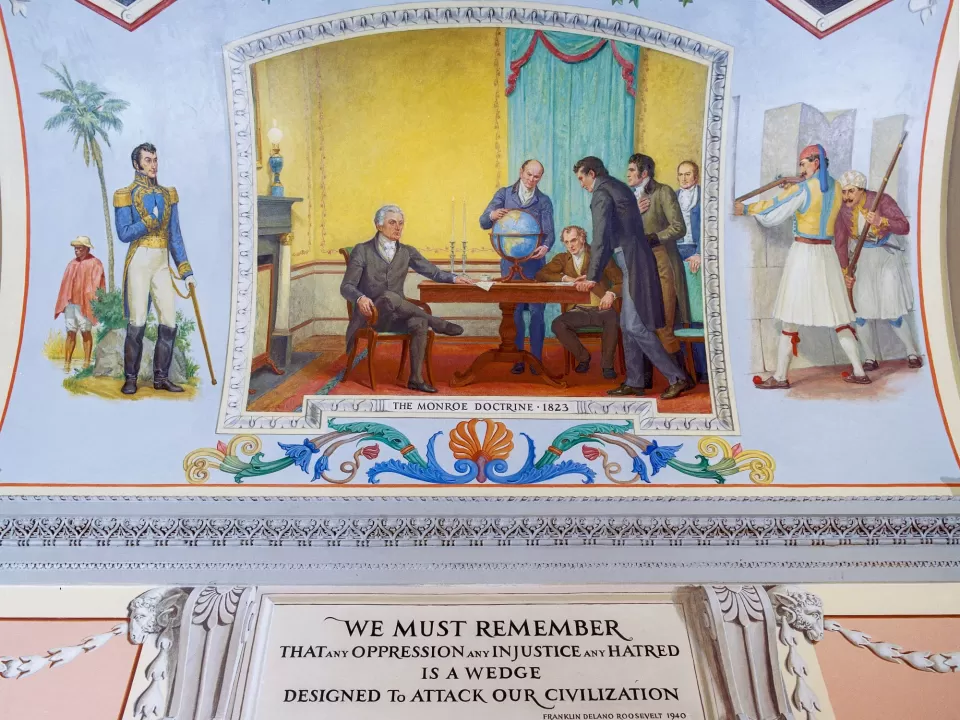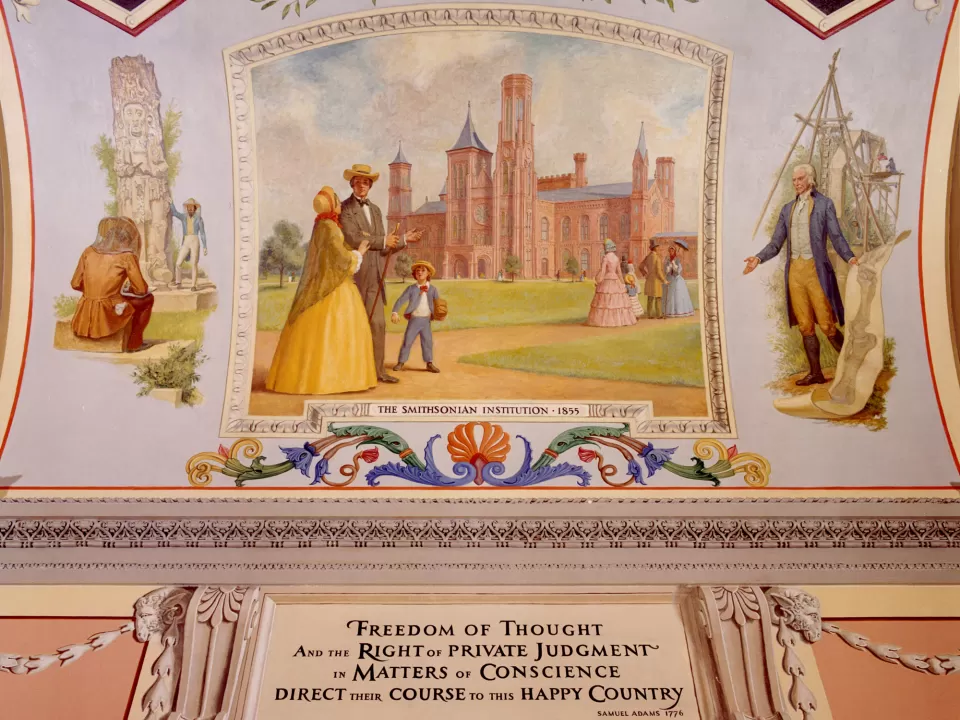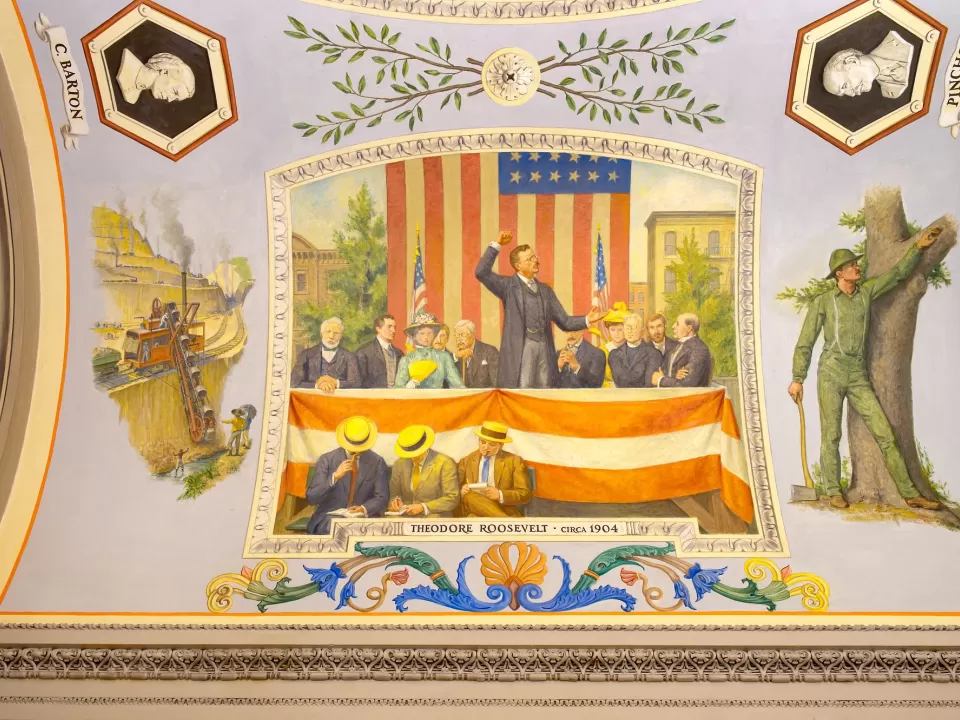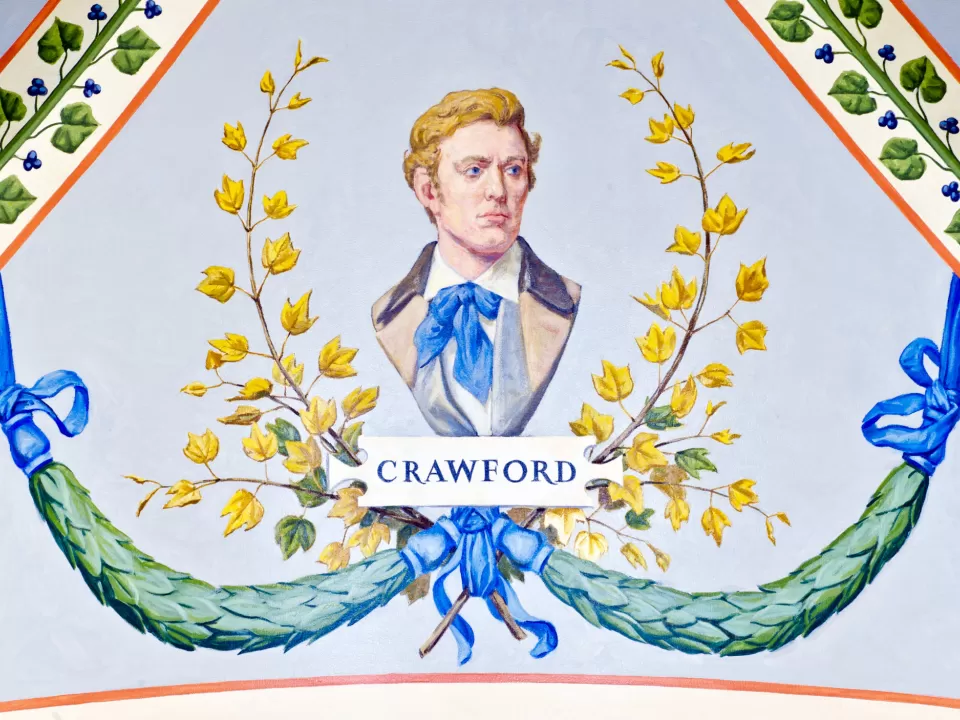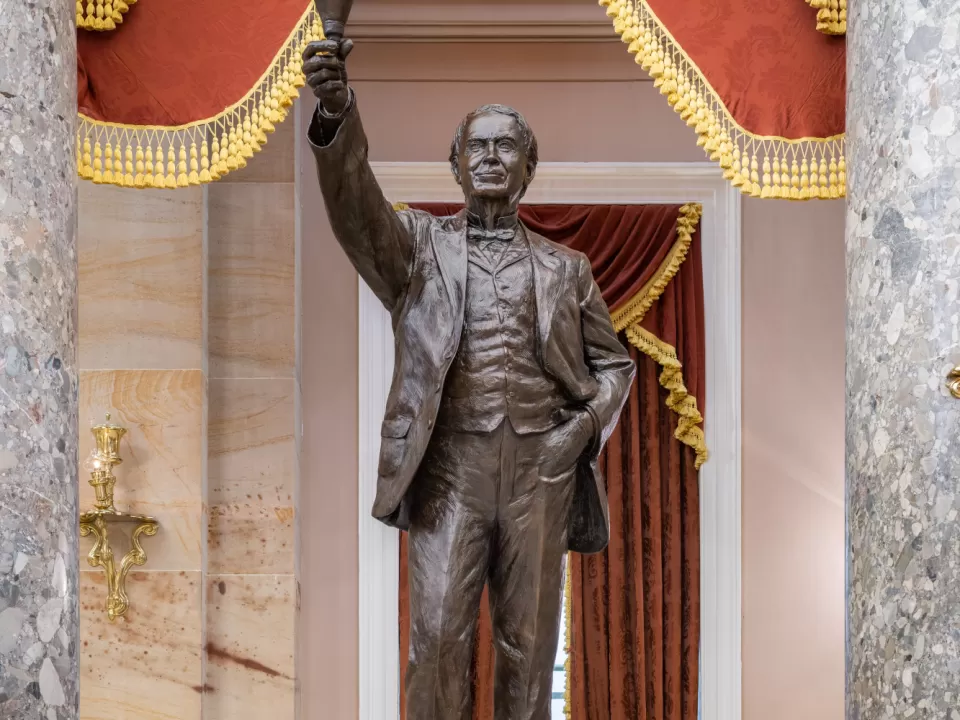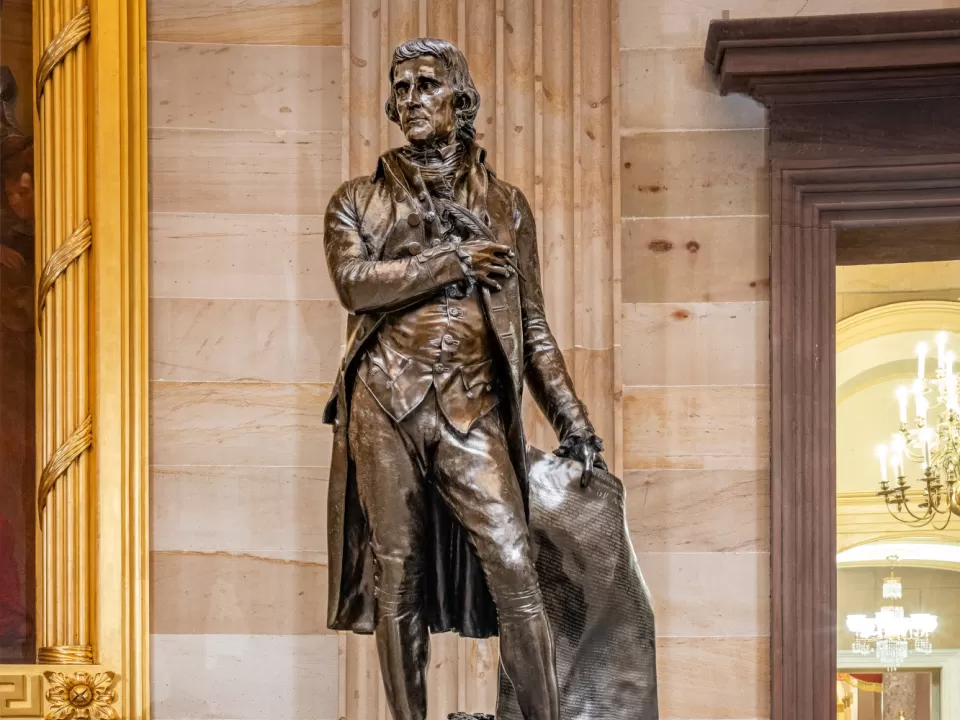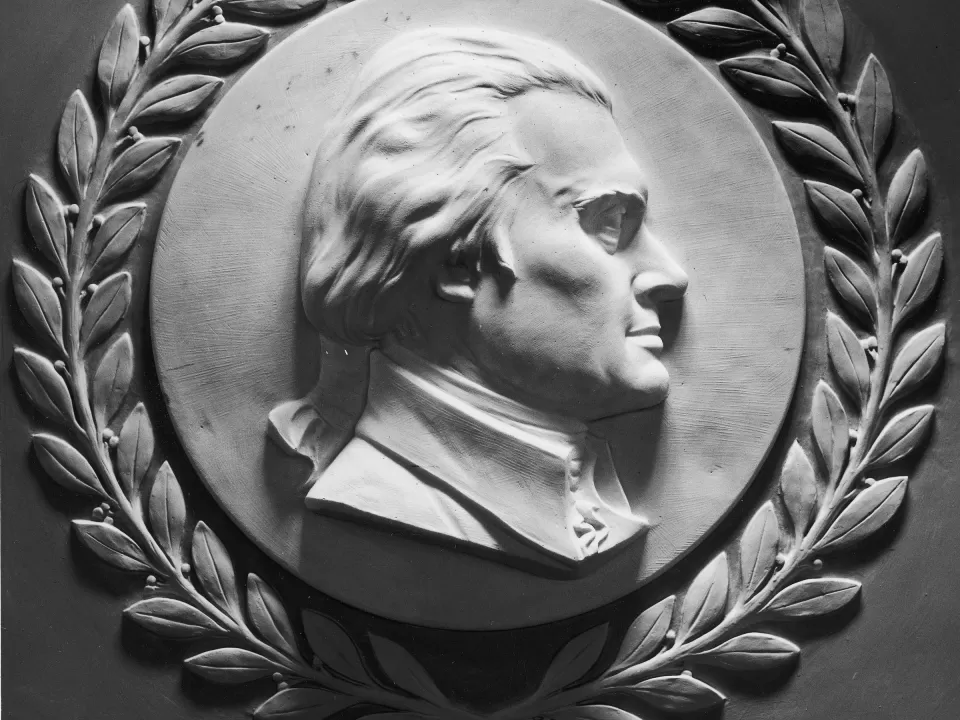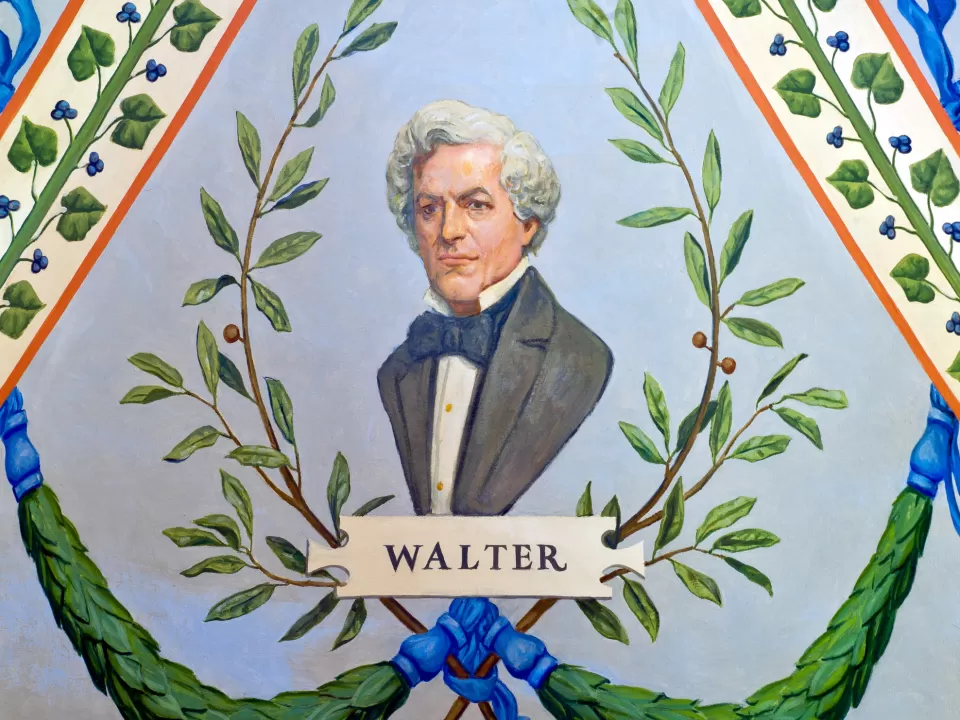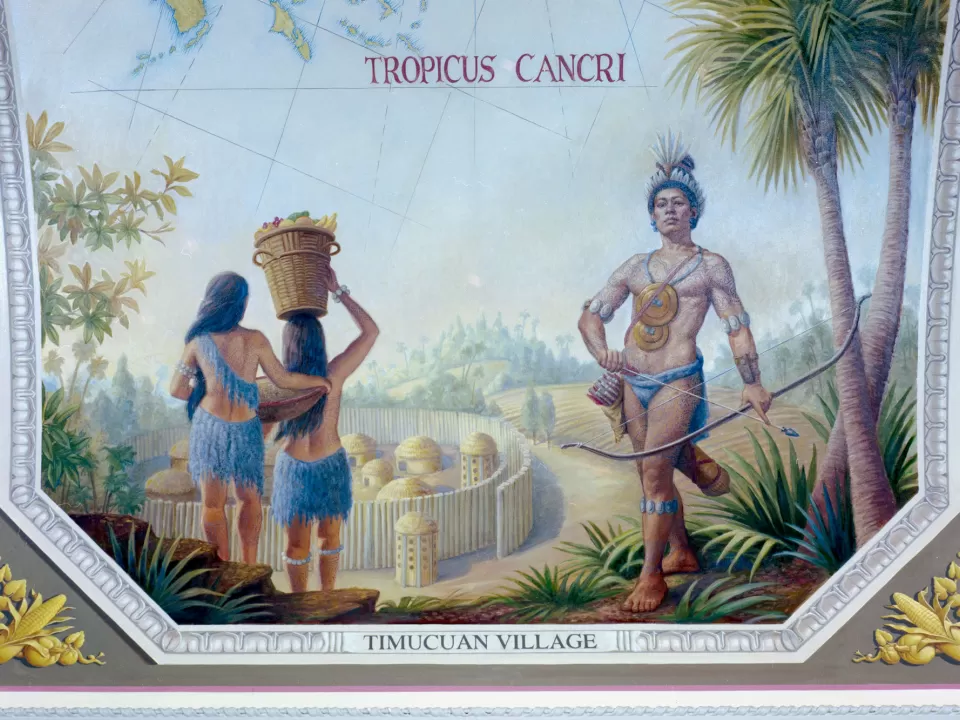Architect of the Capitol employees are responsible for the care and preservation of more than 300 works of art, architectural elements, landscape features and more.
Browse our pieces below or learn more about the artists, collections and subjects.
Filter Results
Displaying 301 - 312 of 338
The Library of Congress in the Capitol, 1800-1897
In 1783 Representative James Madison introduced a resolution to create a library that would give the Congress access to works about the laws of nations and about American history and affairs.
The Mayflower Compact, 1620
The Mayflower Compact, a document signed aboard the ship Mayflower in 1620, set forth principles of tolerance and liberty for the government of a new colony in the New World.
The Monroe Doctrine, 1823
Responding to Russian territorial claims along the northern Pacific coast, and concerned that European nations would attempt to seize recently independent Latin American states, President James Mon
The Smithsonian Institution, 1855
The Smithsonian Institution, which today includes approximately two dozen museums and research centers, was founded in 1846.
Theodore Roosevelt, circa 1904
Spanish-American War hero Theodore Roosevelt became president in 1901, and during his two terms in office he worked vigorously to regulate big business, encourage conservation programs and expand A
